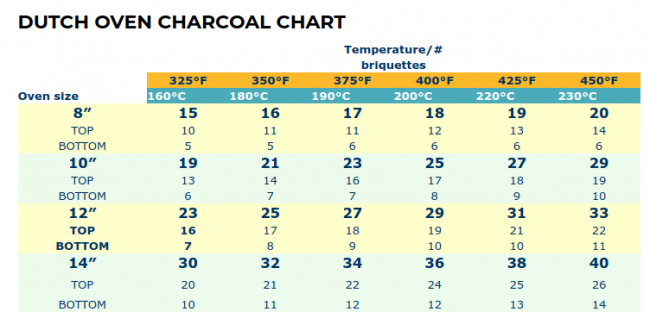Dutch oven cooking
I’m not an expert with a Dutch oven (camp oven) but I’ve got a good command of the basics. I’ve recently revived my “hobby” of cooking in a Dutch as I prepare one-pot meal “kits” from dehydrated and canned foods. Last night I took it all to the outdoors, and what a success!
There doesn’t seem to be a lot of discussion on the use of a Dutch oven here on TP, at least a search didn’t reveal much. I can’t think of a better cooking option during a power outage (as long as you can source fuel – we stockpile charcoal, but would have a supply of hardwood as well). You can cook almost anything in a Dutch – roast, bake, simmer, fry on the upturned lid. And you can use it in almost any weather, as long as you can keep it dry and sheltered from wind.
The fuel required depends on the size oven one is cooking in, and how long a cooking time. Last night I used a 10″ oven to cook a four-serving casserole, the fuel consumption was 20 briquettes, and with the “kit” (1 pint jar hamburger, and packets of dehydrated veggies, spices and topping), the cooking length was two refreshing beverages. Meal preparation time was almost nil, which doesn’t include the time spent in the separate operations of preserving and assembling the ingredients.
My long term goal is to hone my baking skills, maybe try stacking the ovens (did that only once) and continuing to find and “kit up” meals that are quick to prepare and require minimal fuel. (And taste great!!)
So, any other Dutch oven aficionados out there? Is there a place in your preps for this remarkable tool?
-
Comments (17)
-
